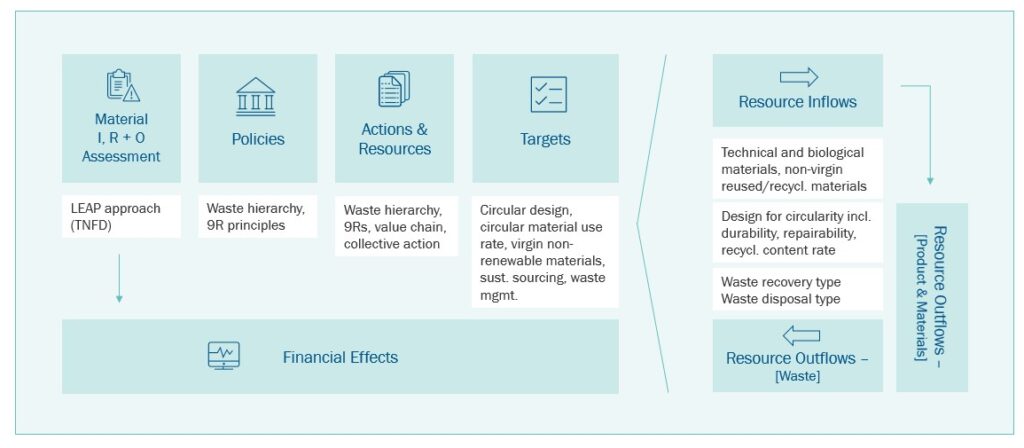The circular economy model has been around for decades; it is based on the concept of extended producer responsibility that emerged in the 1990s. With the introduction of key initiatives under the European Green Deal, interest in the concept has grown significantly. In particular, the EU Taxonomy and the European Corporate Sustainability Reporting Directive (CSRD) compel companies to get serious about circularity. And because some non-EU companies fall within the scope of the CSRD, many businesses based outside the EU will need to do the same.
Going forward, the CSRD will provide a streamlined framework for businesses to follow. Large companies will need to report sustainability information under the European Sustainability Reporting Standards (ESRS) beginning in 2024. Specifically, with ESRS E5 on Resource Use and Circular Economy, circularity becomes a mandatory reporting requirement for many enterprises, and it raises the question: Is your circular economy strategy ready for the CSRD? Read on to learn more about the CSRD, the ESRS and the reporting requirements that are related to the circular economy.
Which Companies Must Report on Their Circular Economy Strategy?
Within the regulatory context of the CSRD, a company’s mandatory double materiality assessment decides which of the [Draft] ESRS Topical Standards are material and should be reported on. As such, if the topic of “Resource Use and Circular Economy” is evaluated as being material, then yes, the company will need to report on the topic.
Regardless of whether companies need to report on Resource Use and Circular Economy, they must disclose the information required by ESRS 2 General Disclosures. These and other requirements were discussed in this recent Sphera Webinar: ESG Reporting Evolution – Getting Ready for CSRD.
Understanding ESRS E5 Requirements
Note that all of the ESRS are still to be adopted by the Commission by means of delegated acts. Yet, a draft of ESRS E5 reporting requirements was published in 2022. Companies are required to set up and describe a process to identify and assess material resource use and circular economy-related impacts, risks and opportunities (IRO) under ESRS 2 IRO-1. Further requirements include:
E5-1: Policies related to resource use and circular economy.
E5-2: Actions and resources related to resource use and circular economy.
E5-3: Targets related to resource use and circular economy.
E5-4: Resource inflows (products—including packaging—and materials, property, plant and equipment).
E5-5: Resource outflows (product and materials, waste).
E5-6: Anticipated financial effects from material resource use and circular economy-related impacts, risks and opportunities.
The good news is that the ESRS E5 refers to existing EU concepts such as the “waste hierarchy” (a principle defined by Directive 2008/98/EC) or the “9 R’s” (refuse, rethink, reduce, reuse, repair, refurbish, remanufacture, repurpose, recycle and recover), and does not fully reinvent the wheel. Still, quite a holistic picture is drawn, which may require many companies to refine their existing circular economy strategies.








